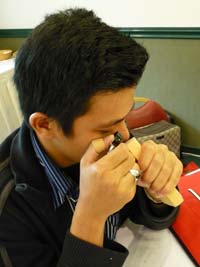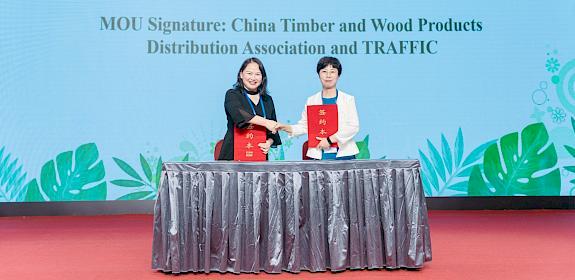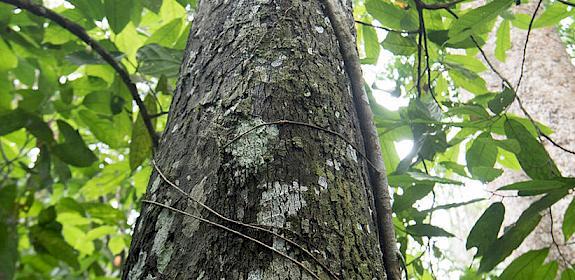How to separate the wood from the ramin trees
Singapore, 5 November 2007—Nearly 30 Customs officials and representatives of CITES Management Authorities and forestry agencies from Singapore, Malaysia, Indonesia and China received training in identification of ramin wood at a workshop held in Singapore in November 2007.

Ramin (Gonystylus), a genus of about 30 species of hardwood trees native to southeast Asia, is listed in Appendix II of CITES (the Convention in International Trade of Endangered Species of Wild Fauna and Flora)—meaning that international trade is allowed under certain conditions.
Enforcement and customs officers had earlier identified a lack of timber identification skills as a key issue hampering enforcement of CITES and other timber-related laws in the region.
To address this need, the US Forest Service (USFS) convened a workshop where specialists from the US Department of Agriculture (USDA) Forest Service – Forest Products Laboratory (FPL) and the Malaysian Timber Industry Board (MTIB) taught enforcement officers how to identify ramin from other confusing and look-a-like wood species.
Copies of the CITES identification guide on tropical woods, scalpels and hand lenses were distributed, and participants encouraged to pass on their new idnetification skills to colleagues back home.
“This training program reflects an important commitment by key government agencies from the United States, Singapore, Malaysia, Indonesia and China to work together in an effort to curb trafficking in one type of timber that everyone agrees should be controlled,” noted US Assistant Secretary of State, Claudia McMurray, who visited the workshop.
The workshop also examined the work of the Tri-National Ramin Trade Taskforce (Indonesia, Malaysia and Singapore) and other initiatives, such as the ASEAN Wildlife Enforcement Network (ASEAN-WEN) which has brought CITES Authorities into closer collaboration with enforcement agencies in the region to combat illegal wildlife trade.
Workshop partners included Singapore’s Agri-food and Veterinary Authority (the CITES Management Authority of Singapore) and TRAFFIC, who provided an overview of the ramin trade and information on CITES regulations relating to Appendix II-listed timber species.
The workshop was supported financially by the US Department of State and the United States Agency for International Development (USAID).



